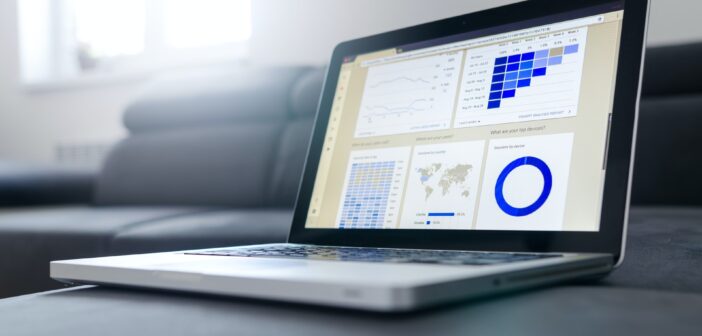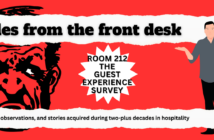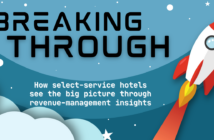Hoteliers continue to struggle with low occupancy as a result of COVID-19, and the impacts are expected to linger into 2021. While there isn’t a silver bullet to demand generation, hoteliers can use a toolbox of strategies to mitigate the impact.
by STEPHEN DAVIS
COVID-19 has brought unique challenges for hoteliers, from reduced capacity to full closures, and occupancy and ADR have been at record lows relative to the previous five years. Though the primary barrier to travel may be COVID-19, there are still strategies hoteliers can employ to support the business and drive incremental occupancy. The strategies presented below are aimed specifically at the current challenges, but most are time-tested strategies and could be helpful regardless of market conditions.
1. Use smart promotional strategies to drive demand without diluting the base business.
When properly executed, promotions can drive incremental demand. However, without the right boundaries in place, they run the risk of being dilutive. Dilution is when you give away a discount when one is not needed to incent a booking, thereby unnecessarily giving up a portion of potential revenue.
To avoid dilution, it is important to create a proactive promotional plan. Establishing a plan at the beginning of the year with planned promotions ready to execute prevents the temptation to pull a promotional lever that hasn’t been fully analyzed. Create a promotional calendar for when you expect to execute discounts, using heavier discounts during periods of travel where there is a clear gap in demand and pausing promotions during periods that need less promotional support.
Regardless of the discount level or promotional offer type, there are two specific components every promotional offer should have.
- Book-by Date: This is the last day that a consumer can book a promotional offer. Promotions should have a limited booking window that is marketed to create urgency and incent bookings.
- Travel Dates: Travel dates are the days when the promotion can be redeemed. Using specific travel dates allows hoteliers to fence offers to specific periods. For example, a promotion could be valid during weekdays but exclude weekends. Alternatively, travel dates could apply to an entire month or more in the calendar but end prior to a high-demand season.
Promotions can be a powerful tool to fill gap periods when executed properly, and planning ahead prevents poor decision-making in the moment.
2. Focus on local and regional drive markets for 2021.
During past recessions, travel behaviors have shifted from major destination vacations to regional getaways. The combined economic and travel restrictions of COVID-19 led to similar behavioral shifts. During 2021, targeting locals and the regional drive market will prove most lucrative.
The “staycation” has seen a revival during COVID-19, with many vacationers looking to remain in their hometowns for a vacation experience. This audience is typically cost-effective to reach, and using specific messages targeted at locals for staycations can resonate strongly. Messages should focus on short stays, with amenities and safety measures highlighted.
In addition, local markets have synergy opportunities to leverage as part of regional messaging strategies. Seek out opportunities like those listed here:
- Partner with local event programming or regional sports tournaments, such as becoming a preferred travel partner for a local sports complex.
- Use local and regional seasonal events to create marketing and website assets that highlight travel throughout the year.
- Partner with your local destination marketing agency to leverage cost-effective marketing opportunities.
As hoteliers look to stretch their 2021 marketing dollars, focusing on the local and regional drive market is likely a safe bet.
3. Leverage direct-to-consumer marketing to optimize spend and personally communicate safety measures.
With revenue down, marketing dollars need to be hyper-efficient. Targeted, direct communication to consumers can be a powerful asset for the hotelier looking to stretch their budget.
In addition, past guests who had a good experience are already familiar with your product are more likely to repeat an experience than risk the unfamiliar. Target past visitors with a return offer as a “thank you” for past business with messages that make them feel appreciated and welcome.
With COVID-19 acting as the primary barrier to travel, communicating safety messages is critical to make guests feel safe booking a stay. Use digital campaigns and email distribution to communicate directly with consumers. Safety messages should include visuals of employees putting safety measures in practice.
4. Assess your channel strategy and align incentives.
Third-party sales channels can be a boon for business, but they also pose risks. With COVID-19 impacting demand, now is the time to assess your channel strategy and whether it is providing a net benefit.
Over time, third party agreements have the tendency to get unruly. Agreements are made year to year and often new partners are added, but many hoteliers do not perform the due diligence to optimize their distribution strategy. Below are some steps to take to ensure your strategy is working for you and not against you.
- Tie your commission structure to volume requirements by providing the most lucrative commissions to the channels that drive the highest volume.
- Review volumes to ensure partners are performing according to their agreement. If you don’t do so already, create a report for third-party sales and the respective commissions to analyze whether partners are living up to their end of the agreement. For channels with low volume and high commissions, consider ending those agreements.
- Explore new channels. New travel aggregators are being created daily, and there are a multitude of companies regularly looking to provide value-added perks to employees such as standing discounts. Both options are worth exploring further as well as regularly looking for new players that could expand your reach.
Sales channels are often overlooked for optimizing revenues. Taking the time to assess your third-party strategy could reveal significant opportunity to increase yields and drive incremental demand.
Unfortunately, the lingering impact of COVID-19 will continue to make profitability a challenge for much of 2021. Hoteliers will need every tool in their revenue-management toolbox to be successful. While there may not be a silver bullet to demand generation, these proactive strategies can set you up for success.
 Stephen Davis, Integrated Insight’s Vice President of Pricing & Revenue Consulting, serves the hospitality industry with expertise in pricing, revenue optimization, and forecasting. Stephen served previously as the Sr. Analyst of F&B Revenue Forecasting at Walt Disney Parks and Resorts. And prior, Stephen was a member of the Disney Resorts Forecasting team, focused on driving occupancy and ADR forecasts for three Disneyland hotels.
Stephen Davis, Integrated Insight’s Vice President of Pricing & Revenue Consulting, serves the hospitality industry with expertise in pricing, revenue optimization, and forecasting. Stephen served previously as the Sr. Analyst of F&B Revenue Forecasting at Walt Disney Parks and Resorts. And prior, Stephen was a member of the Disney Resorts Forecasting team, focused on driving occupancy and ADR forecasts for three Disneyland hotels.





